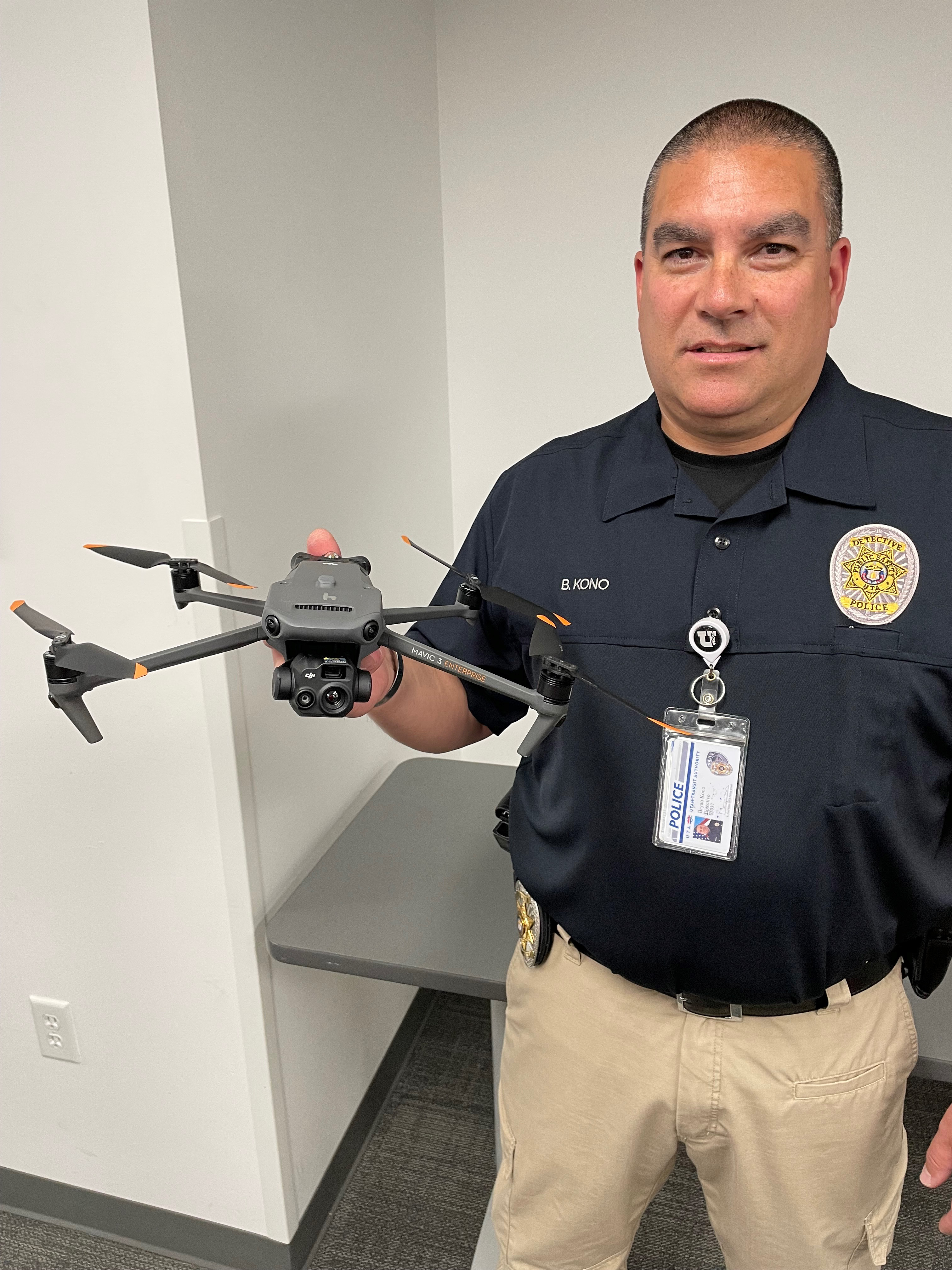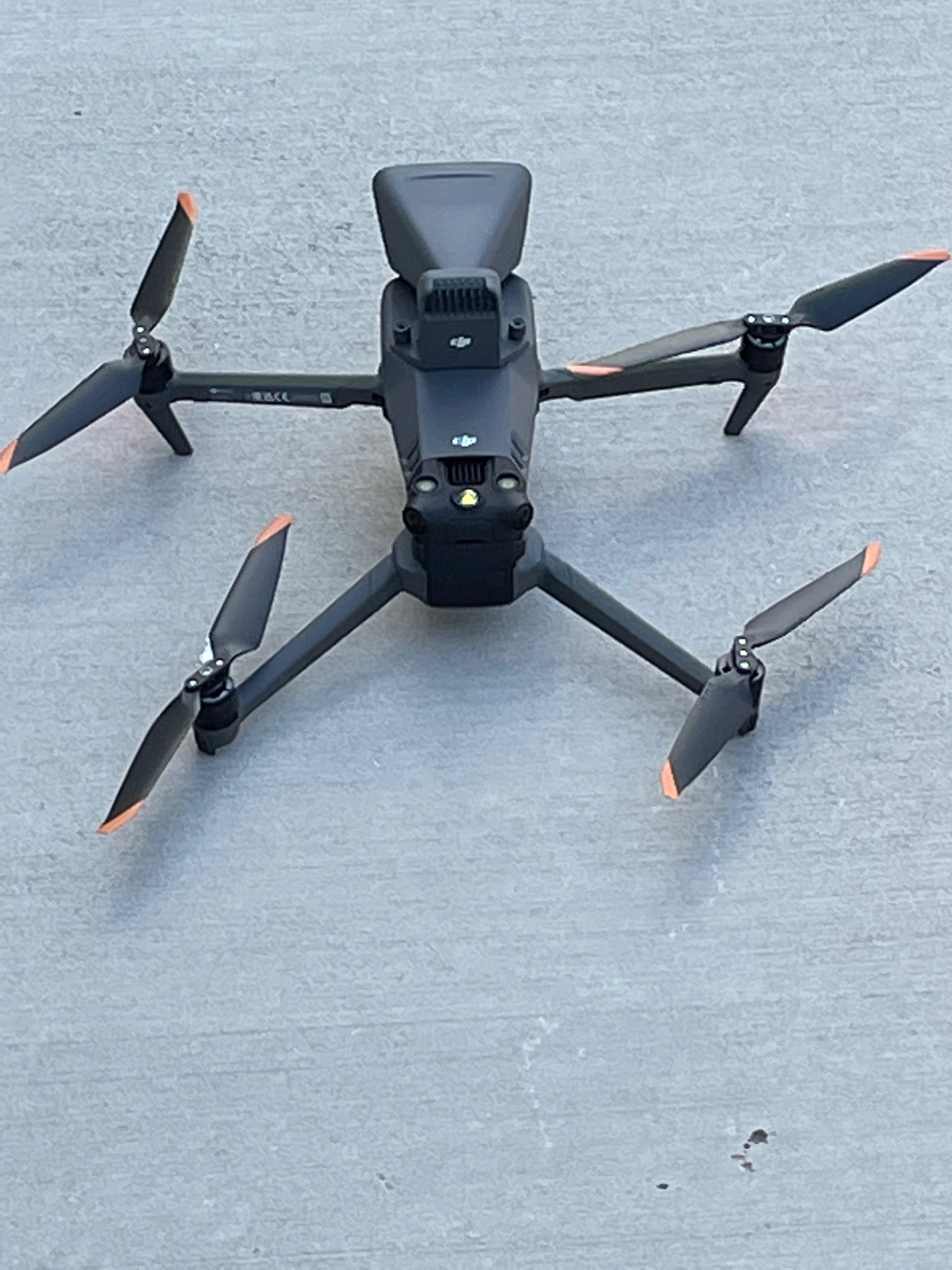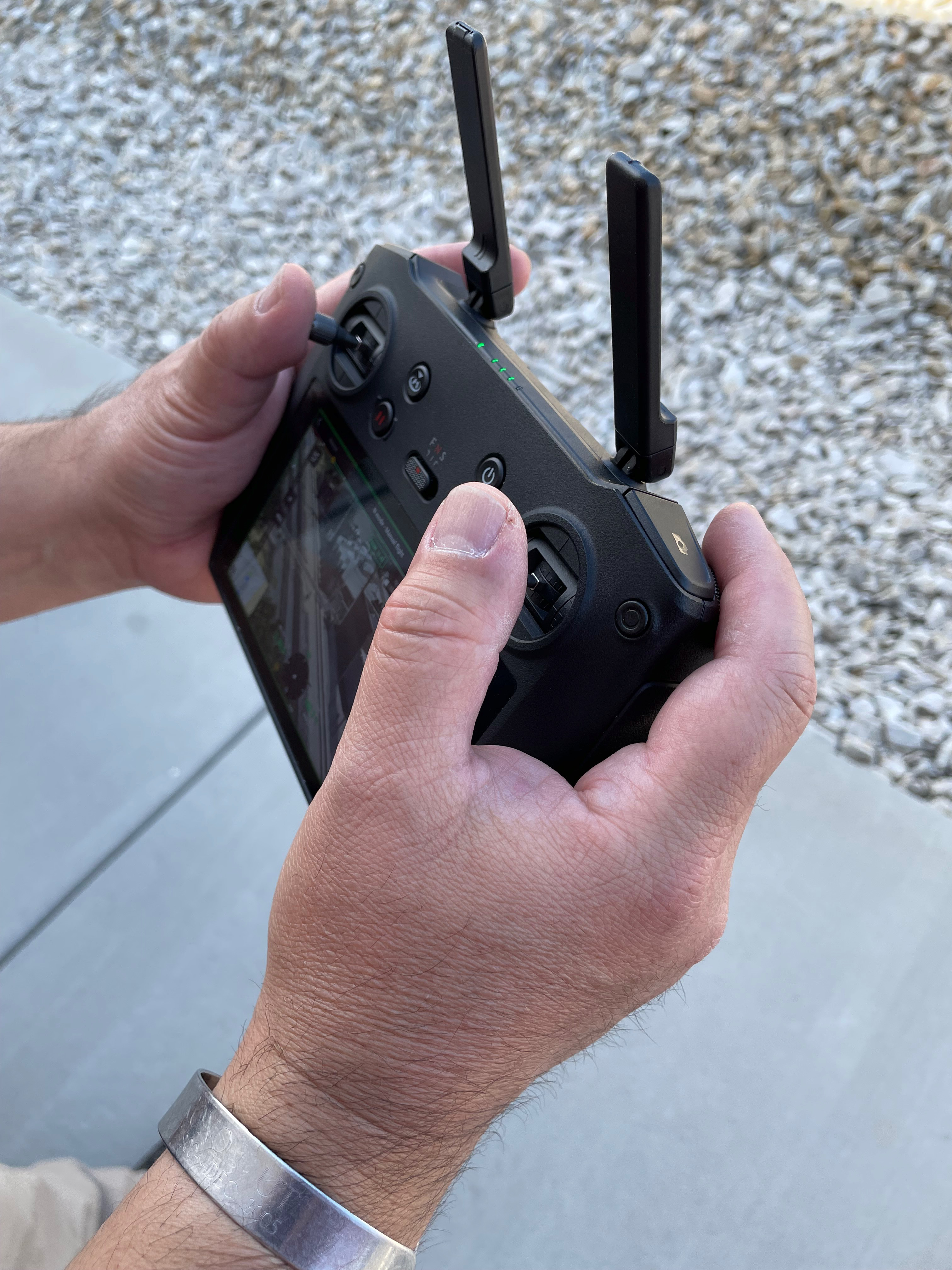In a certain sense, if drones are considered aircraft, UTA can now boast having planes, trains and automobiles, not to mention a fleet of several hundred buses, serving the Wasatch Front.
The airborne branch of UTA’s operation consists of unmanned aerial vehicles (UAVs), also known as drones. After attending a law enforcement conference, UTA Police Chief Dalan Taylor became convinced drones could be a valuable tool for his department. With support from the UTA Board of Trustees, the agency acquired three drones and now has twelve officers licensed as drone pilots who can fly them over UTA property.
"These drones are incredibly intelligent, they’re almost impossible to crash,” said Lieutenant Todd Hewitt, who heads up UTA’s ‘Drone Squad.’ “They adjust for wind, and fight the wind for you. If their battery starts to die, they automatically come home to where they flew from. If the pilot starts having issues they can hit "return to home" and it will come right back. It also has collision avoidance. It will tell us when there's other aircraft in the area.”
The drones can also tell officers a great deal more, making UTA’s rail alignment even safer.
"We started running into problems getting to trespassers. They get out into areas that are remote and difficult to reach,” said Hewitt. “So we’ve been trying to figure out ways to cover those areas quickly without putting our officers out on the rails, which makes them walk long distances with trains going by.”
According to Hewitt, “If we have reason to believe there’s a trespasser on a particularly dark and remote section of rail, we can get a drone 200 to 300 feet in the air and identify the trespasser without having to put an
officer down a dark corridor. The drones have speakers that can play recorded messages that say ‘you're trespassing, trains have been stopped, they're not coming through.’ We can let them know trains have been stopped, help is on the way, and prevent a tragedy from happening.”
Lieut. Hewitt also sees the drones assisting with crowd control at major events like Jazz and college games, LDS General Conference, the Lehi rodeo, and the annual Hill Air Force base air show. According to Hewitt, “the pilot can fly the drone low enough for people to hear messages. ‘Stay out of the alignment’ or ‘please move back to the sidewalk, there's a train approaching.’”
Federal regulations require line of sight operation of UTA’s new drones. UTA’s drone pilots must keep their drone in visual line of sight at all times, be able to see the surrounding airspace in which the aircraft
is operating, and operate the aircraft below a cloud bank or fog, smoke etc. UTA will only fly its drones over private property when that can be done in compliance with Utah state law.
"It provides a really good overview of everything and allows us to do accident reconstruction. It gives our investigators a very good overall view of the scene, which is normally difficult to do. Our trains are 400 feet long. We can't just take a picture with a digital camera and get the totality of the situation. Putting something up in the air gives us a very good view of the scene.”
The drones are helping UTA make it’s system even safer, with greater efficiency and improved reliability. While there are no plans to transport anyone through the air, by adding “planes” to it’s trains, automobiles and busses, the passengers UTA does move will benefit from UTA’s new eyes in the skies.
"This lets us put a tool in the air and get resources where they need to be resolving issues before they get worse.”



